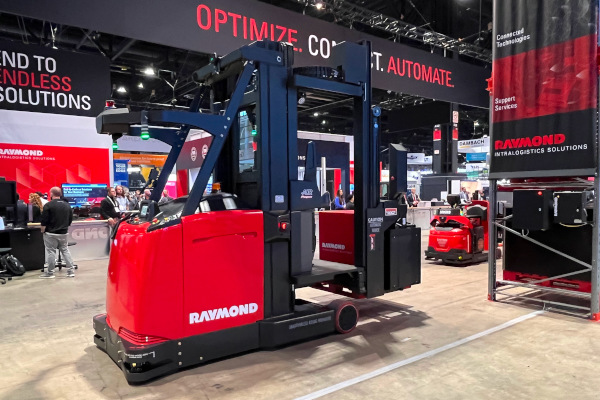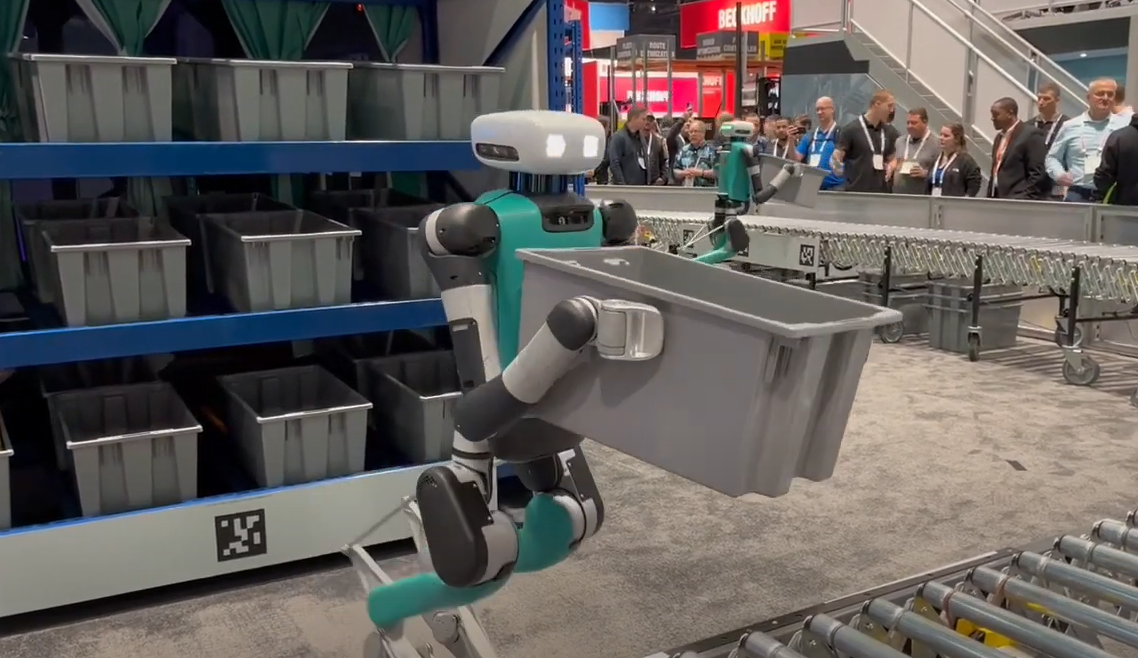If you were dropped onto this planet and landed at McCormick Place in the heart of Chicago in the middle of March, you would probably conclude that planet Earth had been overrun by robots.
Everywhere you turned on the ProMat conference floor, there was a robot lifting something, putting something away, or transporting an item from one place to another.
But, despite a conference hall overrun by technology, the on-the-ground reality is a bit different. Not so long ago, commercial real estate firm Prologis estimate the amount of facilities with any type of automation at around 10%. A recent report from JLL found that one-in-two logistics and industrial occupiers plan to increase their use of automation technologies such as automated storage and retrieval systems by 25% between now and 2030.
Only about 60% of logistics companies across the Asia Pacific region have deployed automation solutions such as automated guided vehicles or telescopic conveyors, JLL added. And by most accounts, Asia Pacific-based firms are ahead of the technological curve.
And yet, this year’s ProMat looked as though it was a technology convention.
Finding the right robot
“Everything has a place,” Ed Romaine, vice president of marketing & business development for Conveyco Technologies, said during his presentation on AMRs at ProMat.
JLL surmised that part of the slow adoption is fit, but also cost. Given that many leases are in the three- to five-year range, there isn’t enough time to recoup the high capital expenditure cost for some solutions, Guevarra says.
“The standard lease term for logistics facilities in the region is generally between three to five years, which makes it too short to recoup CapEx on many new solutions,” says Peter Guevarra, director of research consultancy for Asia Pacific for JLL.
“3PLs have little incentive to invest in technology within a logistics facility when their tenant isn’t willing to co-fund the investment or to commit on a long-term lease,” Michael Ignatiadis, head of supply chain and logistics solutions, Asia Pacific, for JLL, adds.
Understand your tech needs
Romaine says that integrated warehouses are the future, but companies need to understand what functionality they need before investing in technology.
“There’s a lot of styles, a lot of models, and that’s part of that analysis,” he says. “The beauty of this is … it’s flexible.”
Romaine detailed some of the possibilities, including AMRs on the floor, systems that can climb shelving up to 40 feet and grab items, boxes or even pallets, and much more.
Exotec’s Digit robot. (Photo: Brian Straight/SCMR)
He also pointed out that leasing through the Robotics-as-a-Service model, which many technology providers now offer, is giving companies the chance to minimize cash outlay and grow quickly as the need arises.
“You buy what you need,” he says. “You (may look) six months in advance and then depending on need, you lease them, buy them, or whatever makes business sense.”
Editor’s note: A comprehensive roundup of all the happenings at the ProMat 2023 conference will be available to print and digital subscribers in Supply Chain Management Review’s May 2023 magazine issue and online thereafter. To subscribe, click here.
SC
MR


More Automation
- Robotic use grows by 10%
- The art of winning at supply chain technology: Lessons from managing tech for the largest private trucking fleet in the U.S.
- NextGen Supply Chain Conference set for October 21-23
- How to identify and eliminate internal demons in supply chain management
- Estée Lauder, Schneider Electric and S&S Activewear to receive NextGen End User awards
- 2024 Robotics Application Conference announces session, speaker lineup
- More Automation
Latest Podcast

 Explore
Explore
Software & Technology News
- How technological innovation is paving the way for a carbon-free future in logistics and supply chains
- Körber Supply Chain Software’s Craig Moore says MercuryGate acquisition is about the customer
- Robotic use grows by 10%
- Harnessing Edge Computing and AI Vision Systems for Real-Time Logistics Insights
- The art of winning at supply chain technology: Lessons from managing tech for the largest private trucking fleet in the U.S.
- The 3 types of cyberattacks affecting global supply chains
- More Software & Technology
Latest Software & Technology Resources

Subscribe

Supply Chain Management Review delivers the best industry content.

Editors’ Picks





